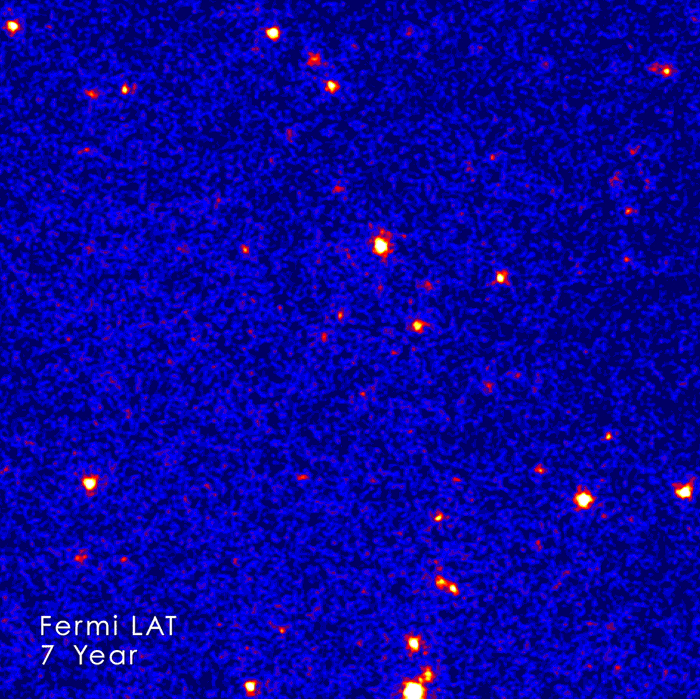
 Credit: NASA/DOE/Fermi LAT Collaboration
Credit: NASA/DOE/Fermi LAT Collaboration
The Visibility of Darkness
The Universe is held together by the gravity of dark matter (and the gravity of a smattering of normal, or baryonic, matter). Although first suggestion of the effects of dark matter date from the 1930's, no one knows what dark matter really is. Studies of Gamma-ray emission from the cosmos may hold the key to finally unraveling the mystery of dark matter, or at least help rule out some extant theories. The image above is data from one such test. One theory is that dark matter is composed of a special type of subatomic matter, so-called "weakly interacting massive particles", or WIMPS for short. Some theories suggest that WIMPS should decay, or annihilate after colliding, and these processes, if they occur, should generate an otherwise unidentified glow of Gamma-rays. Gamma-ray observations have indeed revealed an apparently diffuse glow of radiation, called the Extragalactic Gamma-ray Background Light, or EBL. The nature of the EBL has been a mystery for years, holding out some hope that some of the observed emission might be due to exotic processes involving WIMPS. Using data from 7 years of observation with the Large Area Telescope on the Fermi Gamma-ray Space Telescope (a portion of which is shown above), astronomers have done a the most precise study to date of the EBL. The Fermi observations show that most if not all of the EBL is actually produced by a type of extremely active galaxies called blazars, with little contribution from processes involving WIMPS. Despite such disappointments, the quest for understanding goes on.
Published: November 14, 2016
<
HEA Dictionary ● Archive
● Search HEAPOW
● Other Languages
● HEAPOW on Facebook
● Download all Images
● Education ● HEAD
>

Each week the HEASARC
brings you new, exciting and beautiful images from X-ray and Gamma ray
astronomy. Check back each week and be sure to check out the HEAPOW archive!
Page Author: Dr. Michael F. Corcoran
Last modified Monday, 26-Feb-2024 17:35:21 EST


